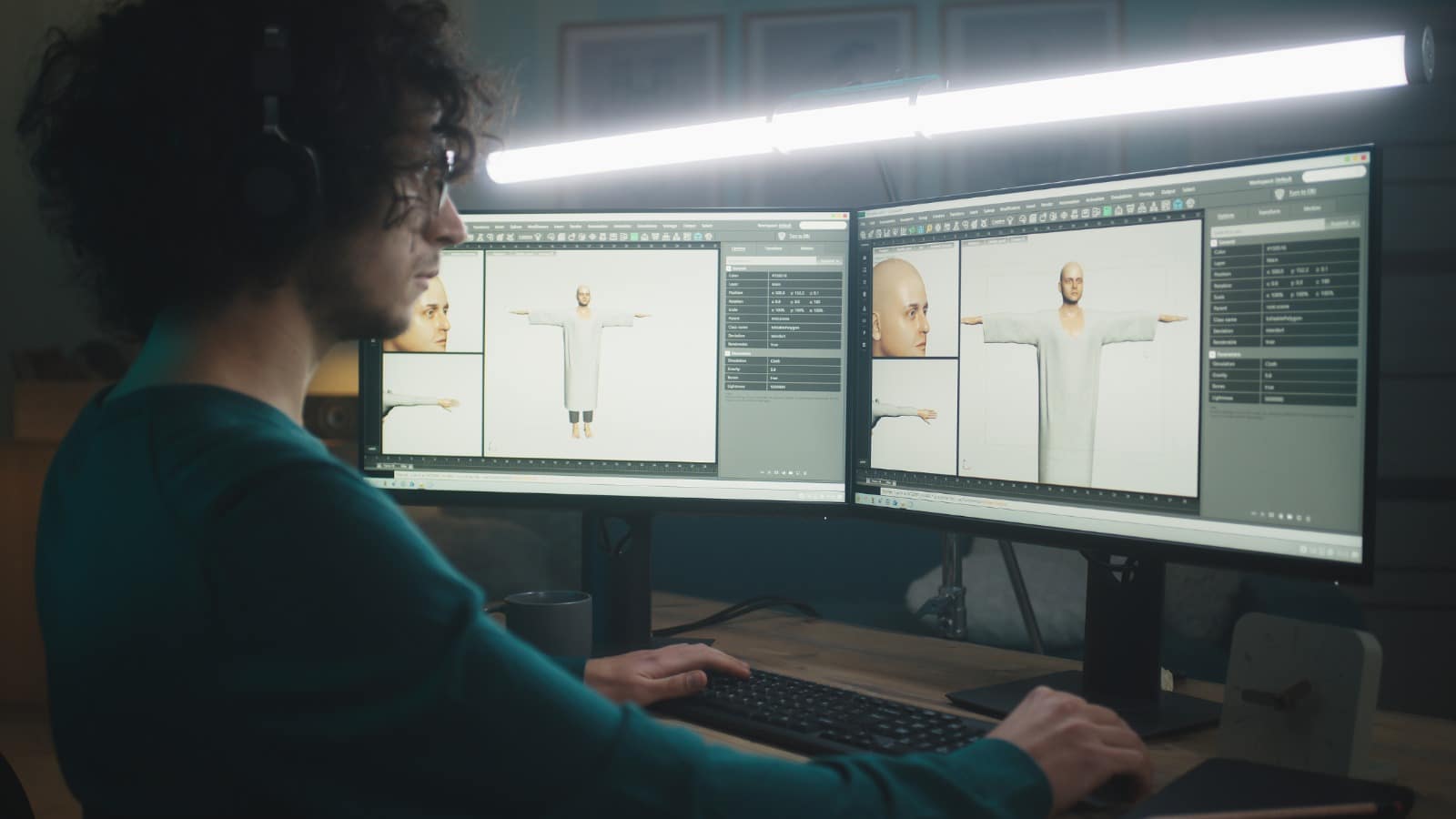In the digital world, 3D animation has marked its entry. Along with 3D animation, another term often being coined is ‘3D animation pipeline’, a system of software and hardware. In this concept, there’s a rigid sequence of stages that the production is bound to go through, from the initial idea to the execution of the concept.
In short terms, the ‘3D pipeline’ is a process that helps tailor the project. The main focus is to ensure that each team involved in the project production works on the agreed task and finishes the work by the agreed timeline.
3D Animation Pipeline: A Short Introduction
What is the 3D animation production pipeline? It is a production process composed of animation tools, like software and hardware, that exercise a pre-defined order, resulting in a 3D animated product. The final product of an animation pipeline can be anything ranging from a television show, 3D model, or video game to a marketing video.
Indeed, 3D animation creation can be a set of complicated tasks as it consists of a rigid set of hardware, a long list of functions, and a massive team of people where everyone is well equipped with exceptional skills and talents. So, to maintain a smooth workflow, it is of utmost importance to exercise a smooth animation production workflow, which is possible through a 3D animation production pipeline.
Reasons For 3D Animation Pipeline
The following are some of the top reasons why a 3D animation pipeline is your right approach:
1. Rigid Structuring –
To ensure that everybody involved in the team is on the same page and working towards achieving a common goal, there is a strict demand for an animation pipeline. Furthermore, various 3D animation design studios inevitably stand apart from the crowd; the 3D animation production pipeline will ensure that everyone is actively engaged in the project and carries the sheer determination to match the customer’s expectations and exceed them.
2. Team Management –
Several people are engaged in an animation project, and they must coordinate with each other to reach the final goal. All of the people involved are segregated into multiple groups and teams. With the 3D animation pipeline, they all utilize their fullest potential to contribute to the project.
3. Budget Management –
The entire budget for 3D animation may vary depending on many factors. However, there’s always a base price for every project, and the same is true for 3D animation. The base price can be used effectively only if it is under control, and for this, an animation pipeline is necessary. The main focus of doing all of this is that the team already predicts the return on several 3D animation projects even before the project process has started.
4. Time Management –
The most important factor when it comes to the benefits of the animation pipeline is time management. This is because, be it a 3D series of feature films, getting it done is time-consuming and complex. Once you start the project, even the minute and slightest will delay the overall project delivery date. However, with a 3D animation production pipeline in the frame, each step will come in a detailed time frame that will encourage the team members to coordinate effectively.
3D Animation Pre-Production Process
Regarding the 3D animation production process pipeline, the first stage is the pre-production process. Various activities, such as research and planning, occur in the pre-production stage.
1. Generating Idea
The first process under pre-production is idea generation, during which all the brainstorming takes place. This is because only after thorough research can an idea be created that will be revolutionized and will be the objective of when it comes to animation.
2. Creating Story
Here constant poking of the idea takes place where the stories are defined and redefined until a solid outline is given to your story. Creating a story helps decide the animation’s future, ranging from characters to conflict.
3. Writing Script
When the script is written in a literary version, it becomes known as script. The script writing will include elements like action time, dialogue, character movements, and environment.
4. Storyboarding
The non-moving visual appeal of a script is known as a storyboard. It can be compared to a comic book, with ideas of where to stage the camera, the poses of the main character, and more.
5. Animatic
The movement of the storyboard that will make it into the final edit of the entire project is termed animatic. Efforts are made to demonstrate the project’s sequence timing in an uncomplicated format with the help of storyboard drawings in 2D.
6. Design
The decision on the final look of the project is called design, where all the props, costumes, concept designs, and environment are decided.
Production Process in 3D Animation Pipeline
If you wonder, ‘What is the animation post-production process?’, your questions will be answered at this stage.
All the efforts put into the pre-production stage should be executed heroically in the production process. This is done by handing the 3D animation visual element to the relevant teams. The team leader must take accountability for ensuring that both the time frame and quality align with the plan set in the pre-production stage.
Let us learn more about the production process below:
- 3D Layout – The 3D version of a 2D animatic is known as a 3D layout. It comprises essential components such as the animation, proxy geometry, size and shape of the characters, environment, and more.
- 3D Modelling – The process where the geometric surface representation of objects is developed with the help of a specific 3D software is known as 3D modelling.
- 3D Texture – The application of surface properties, textures, and colours of the 3D model is known as 3D texturing. One can find the 3D model in the shaded flat colour, and only then is it handed over to the textured artist.
- 3D Lighting – In 3D animation, lighting is a phase where the entire aura of a 3D is set via lighting. All of the lighting decisions are based on the designs that were made in the pre-production stage. In this stage, the lighting artists select the proper technique, tools, and sources to illuminate the scene.
- 3D Rigging and 3D Animation – The animators need to move the parts of the 3D object seamlessly. This is done with the help of 3D Rigging designers. Furthermore, when the 3D characters are transferred, the stage where it is done is known as 3D animation. This specific stage is one of the most vital stages of 3D animated video production.
- Rendering – The segregation of 3D animation to render multiple layers in the form of background, highlights, shadow, colours, and foregrounds is known as rendering. When the composting is done in the post-production stage, the layers are jumbled in and United again.
Post-production Process in 3D Animation Production Pipeline
The final draft of the video, which gives the video its final touch to make it look polished, sharp, and professional, is done in the post-production stage. In this stage, several artists are engaged in the usage of multiple tools to create a refined video.
The following are the process that comes under the post-production stage:
- Composting – As discussed above, the layers rendered in the previous stage are put together. Anyt, rangiplacing a couple of layers together to align and adjust the hundred layers can happen here. All of this depends on the animation team’s decision.
- VFX – Achieving and implementing effects like sparks, raindrops, camera shakes, and more can be done effortlessly in a 2D environment, and all of this can be done during the output stage of the animation production without settling for a lesser quality.
- Colour Correction – When done with a 3D animation, the final adjustment is called colour correction, colour timing, or colour grading. Colour correction is significant in maintaining uniformity throughout the whole project.
- The Output – All the efforts are then transformed into a fruitful output in this stage. This is where people usually go for the digital video option out of the many 3D animation pipeline format output options. This is because it is easily playable on any digital device. All of these scenes can be achieved with the help of an animation pipeline.
CGI Pipeline And 3D Animation Difference
CGI or computer-generated imagery is primarily used to make or use images in feature films, TV series, art, and more. As far as the difference between 3D animation and CGI Pipeline is concerned, it can be put that both of them are more or less the same since they use procedures and methods for both the creation and utilization of art in innovative ways.
Wrapping Up!
A 3D animation production pipeline can initiate a creative assembly line, where each stage is pre-planned and ranges from conceptualization of the idea to publishing it. Hence, to create a 3D animation project, a predetermined list of tasks must be thoroughly checked by the production team in the studio and followed up with a thorough analysis.
To get that ace 3D animation output, the structure to be stuck to is known as a 3D animation production pipeline. Therefore, this was all there to know about this concept. Now that you have a fair idea of what it is, you are all set to get started on the 3D animation pipeline.
FAQs
Is it necessary to know how to draw to be a good animator?
Only sometimes, but if you know how to draw, it will always come in handy in your animation journey, as designing, storyboarding, and other artistic creativity can be challenging for you if you have basic knowledge about drawing.
How should I get started for stepping into animation production?
An average workable computer where you can do 3D animation is your initiating stage for Kickstarting your animation production career.
Is animation as a career worth it?
Animation as a career can be anything ranging from a rollercoaster ride to tough, challenging, and more, so if you are entirely into this world of animation, you should pick it as a career for yourself.



